
Frullania polysticta is a species of liverwort in the family Frullaniaceae. It is found only in Madeira and the Canary Islands and is considered a vulnerable species.

Frullania is the only genus of liverworts in family Frullaniaceae. It contains the following species:

Picconia excelsa, commonly known as palo blanco, pau blanco, or branqueiro, is a species of tree in the family Oleaceae. It is endemic to Macaronesia, occurring only on Madeira and the Canary Islands.
Frullania nisquallensis, commonly known as hanging millipede liverwort, is a reddish-brown species of liverwort in the family Frullaniaceae. It is found in western Washington and British Columbia, including Vancouver Island. The plant grows in mats, sometimes in mats that hang from tree branches, or growing close to the substrate. The leaves are small and flat, with the lower leaves being slightly smaller than those growing higher up the stem.

Chrysolopus is a genus of weevils in the family Curculionidae.

Frullania dilatata, the dilated scalewort, is a species of liverwort in the family Frullaniaceae.

Frullania asagrayana is a reddish-brown species of liverwort in the family Frullaniaceae that grows in eastern North America.
Frullania intermedia is a liverwort species in the genus Frullania.
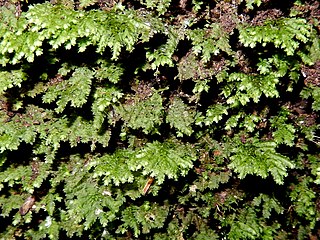
Hypopterygium tamarisci is a species of moss in the family Hypopterygiaceae.
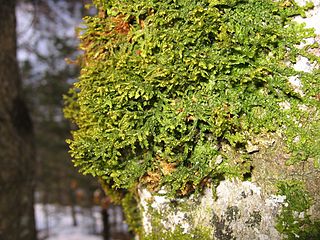
Porellales is an order of liverworts.

Lois Clark (1884–1967) was an American botanist, bryologist, and professor who studied plants of the Northwestern United States, particularly the genus Frullania. She taught at the University of Idaho and the University of Washington. The standard author abbreviation L.Clark is used to indicate this person as the author when citing a botanical name.

Heathfield Park SSSI is a 41-hectare (100-acre) biological Site of Special Scientific Interest east of Heathfield in East Sussex. It is part of Heathfield Park, a Grade II* listed building and park.
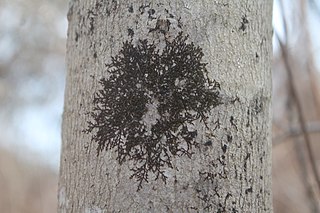
Frullania eboracensis, the New York scalewort, is a species of liverwort in the family Frullaniaceae. New York Scalewort can be distinguished from other species of scalewort by its morphology. In particular, the small size, lower leaf lobes that are about as long as they are across, lower leaf lobes that are about one-third to one-half the size of upper leaf lobes, underleaves that are only a little wider than their stems. The underleaves of New York Scalewort have toothless or nearly toothless lateral margins, and perianths that have smooth to slightly roughened keels along their sides. Despite some distinctive morphology, microscopy is often necessary to confidently distinguish New York Scalewort from other species of Frullania, and the cells of the leaves have diagnostic irregular, jagged edges and cell walls are swollen at intervals.
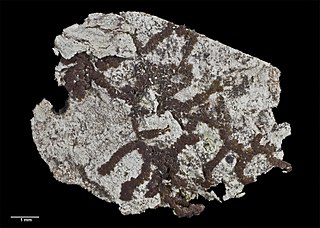
Frullania wairua, the spirit liverwort or radar bush liverwort, is a species of liverwort in the order Porellales. It is one of 24 species in the large genus Frullania that are native to New Zealand. The species was first described by Matt von Konrat and John E. Braggins in 2005 in the New Zealand Journal of Botany.
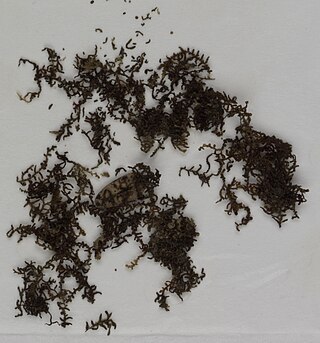
Frullania hattorii is a species of liverwort in the order Porellales, native to Tasmania, Australia. The species was first described by Matt von Konrat and John E. Braggins in 2003.
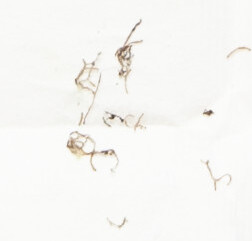
Frullania truncatistyla is a species of liverwort in the order Porellales. The species was first described by Matt von Konrat, Jörn Hentschel, Jochen Heinrichs and John E. Braggins in 2011, and is native to New Zealand.
Frullania colliculosa is a species of liverwort in the order Porellales, native to New Zealand. The species was first described by Matt Von Konrat, Jörn Hentschel, Jochen Heinrichs, John E. Braggins and Tamás Pócs in 2010.
Frullania hodgsoniae is a species of liverwort in the order Porellales, native to New Zealand. The species was first described by Matt Von Konrat, Jörn Hentschel, Jochen Heinrichs, John E. Braggins and Tamás Pócs in 2010.













